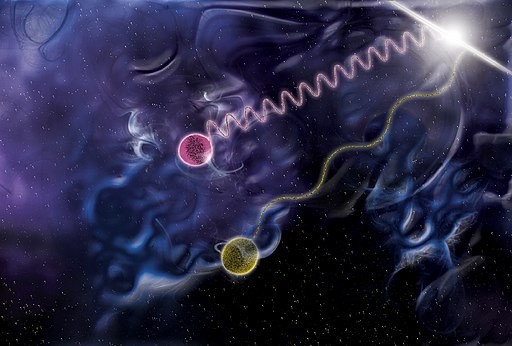A team of researchers has found a previously unknown way light interacts with matter. This discovery can unlock technological advancements like light-emitting diodes, enhanced solar power systems, and semiconductor lasers.

Early Investigations of Photon Momentum
In 1923, American physicist Arthur Compton found that gamma photons can obtain enough momentum to interact strongly with free or bound electrons. This proved that light can exist as both wave and particle. In a recent study, the research team demonstrated that the momentum of visible light in nanoscale silicon crystals can make a similar optical interaction in semiconductors.
Understanding the origin of the interaction would require revisiting the discovery of Indian physicist C.V. Raman in 1928. While attempting to repeat the Compton experiment with visible light, Raman encountered inconsistencies between the momentum of electrons and that of visible protons.
Despite this obstacle, Raman's experiment of inelastic scattering in liquids and gases led to the proposal of the vibrational Raman effect and spectroscopy method that came to be known as Raman scattering.
Understanding New Property of Light
Recently, a team of experts learned that photons can gain substantial momentum when confined to nanometer-scale spaces in silicon. The discovery resulted from a collaborative effort between chemists from the University of California, Irvine, and scientists from Russia's Kazan Federal University under the leadership of Dmitry Fishman. The details of the study were discussed in the paper "Photon-Momentum-Enabled Electronic Raman Scattering in Silicon Glass."
Silicon is the second-most abundant element on Earth after oxygen. Although it forms the backbone of modern electronics, silicon is an indirect semiconductor, so its use in optoelectronics has been limited by poor optical properties.
According to Fishman, although silicon does not naturally emit light in its bulk appearance, detectable light can be produced by porous and nanostructured silicon upon exposure to visible radiation. For decades, experts have been aware of this possibility, although the precise origins of the illumination have not yet been explained.
The team discovered photon momentum in disordered silicon from electronic Raman scattering. Unlike traditional vibrational Raman, electronic Raman is related to the electron's different initial and final states. This phenomenon was previously observed only in metals.
For the experiments, the scientists produced silicon glass samples ranging in clarity from amorphous to crystal. A 300-nanometer-thick silicon was then subjected to a tightly focused continuous-wave laser beam that was scanned to write an array of straight lines.
In areas where the temperature did not exceed 500 degrees Celsius, a homogeneous cross-linked glass was formed. Meanwhile, a heterogeneous semiconductor glass was formed in spots where the temperature exceeded this reading. The light-foamed film enabled the research team to detect how electronic, optical, and thermal properties varied on the nanometer scale.
As Fishman noted, their work underscores the critical role of photon momentum as it challenges their understanding of the interaction between light and matter. Ultimately, the study paves the way for the widening of conventional optical spectroscopies beyond their usual applications in chemical analysis.
Check out more news and information on Photons in Science Times.










